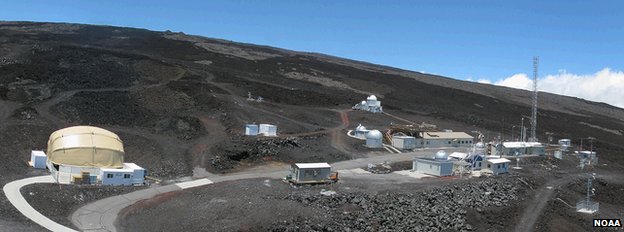Slaying the Slayers with the Alabama Two-Step « Roy Spencer, Ph. D.The question of how much warming will result from adding carbon dioxide to the atmosphere is what we skeptics are skeptical of. The climate system is amazingly complex, and the IPCC position that elements within the climate system (especially clouds) will change in ways which amplify the resulting small warming tendency is highly questionable, to say the least. If the climate system instead acts to reduce the warming, then anthropogenic global warming (AGW) becomes for all practical purposes a non-issue.
This represents what I believe to be the simplest description of how greenhouse gases cause warming of the surface. It bypasses all of the esoteric discussions and instead deals only with observations, which I believe cannot be easily explained any other way:
FIRST, warming can be caused by a decrease in the rate of energy loss by the climate system (or any other system, for that matter).
SECOND, IR absorbing gases are observed from satellites to reduce the rate of energy loss to space.
THEREFORE, adding more IR absorbing gases will cause a warming tendency.
QED.
Again I emphasize, however, the above simple argument is necessarily true only to the extent that all other elements of the climate system remain the same, which they will not. These other changes are called feedbacks, and they can either make or break theories of global warming and associated climate change.
for konradv. you are both right and wrong with your simplistic view that CO2 runs the climate. the effect is real, the positive feedbacks are not. no positive feedback, no problem.
ever wonder why ocean water never exceeds 31C and is seldom above 29C? different pathways are expanded or contracted depending on how much energy is available to power them. and the natural order of things is to reduce the impact of disturbance to the system. negative feedback. homeostasis.
the climate models are rough projections of what may happen given the few parameters that are fed into them. slight changes in how clouds (or a host of other things) can radically change the outcome of those results. the feddbacks of the IPCC climate models are obviously only as good as the information and programing put into them. I think the real climate system acts to dampen the effect of extra CO2 as it does with many other things. obviously other disagree with me. but we shall see.


